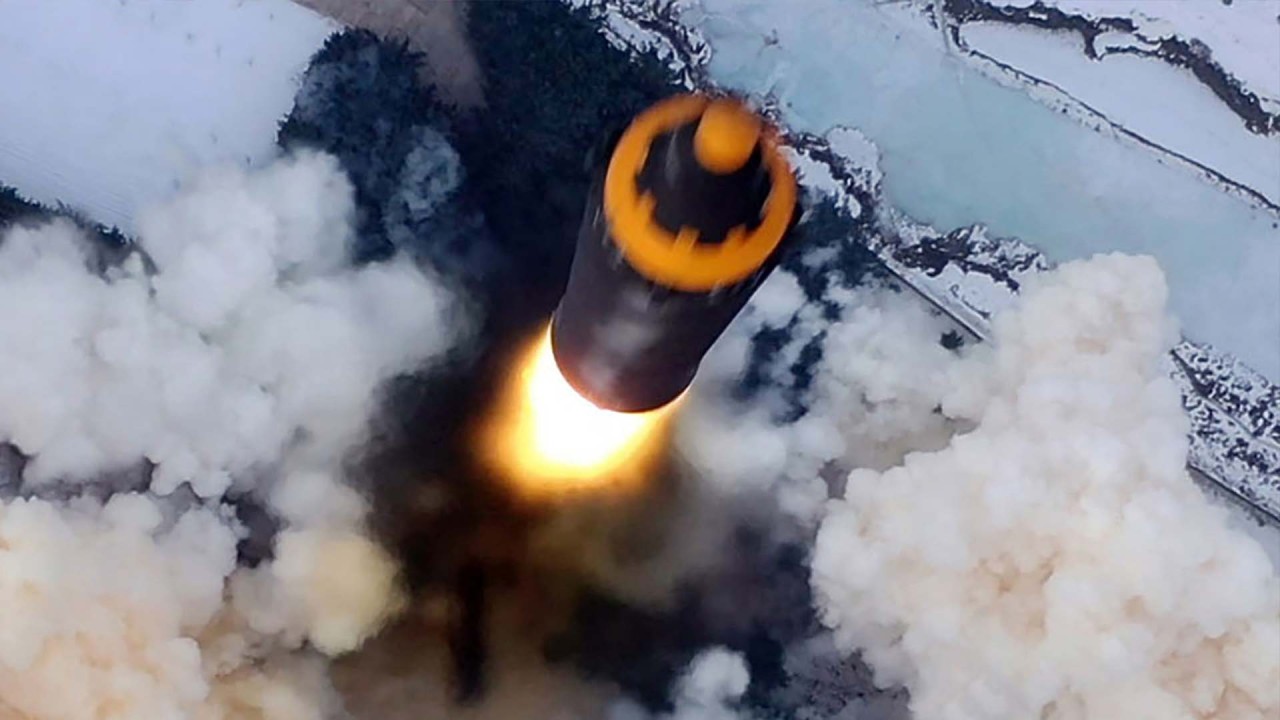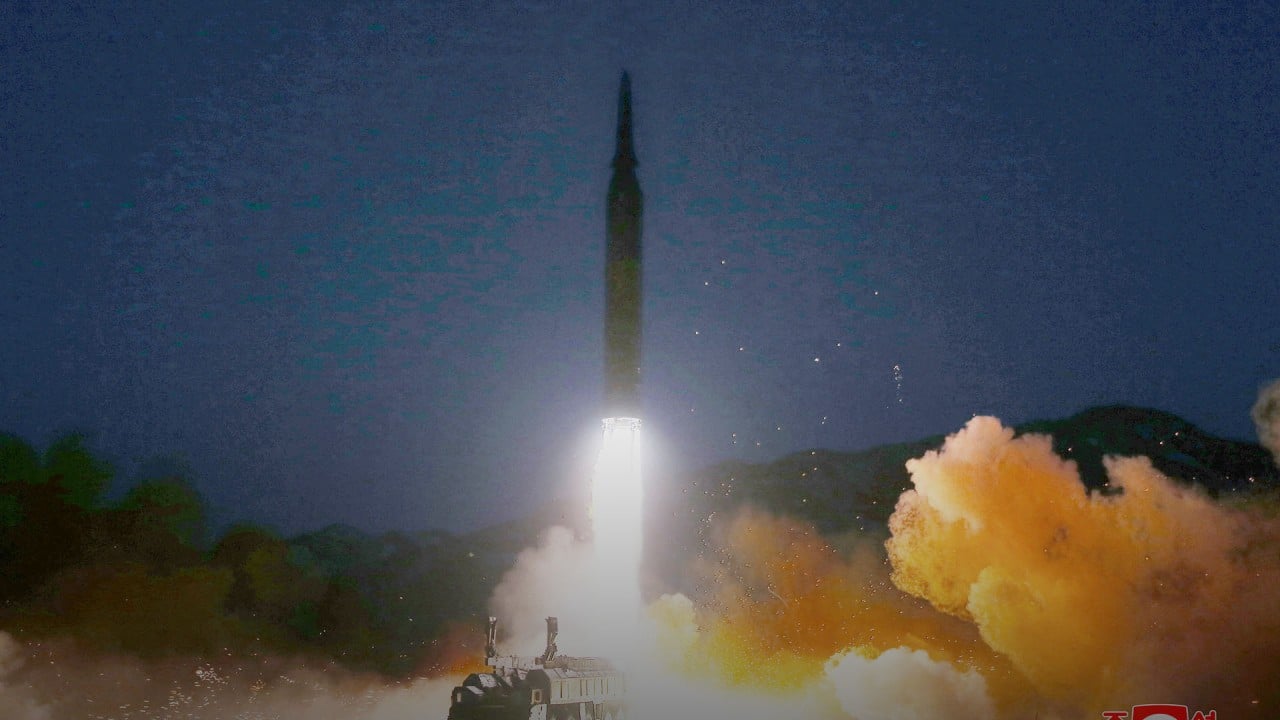
North Korea fires suspected intercontinental ballistic missile for first time since 2017; US ‘strongly condemns’ launch
- South Korea’s military said the projectile was fired on a ‘lofted’ trajectory high into space; Seoul had warned that Pyongyang may be preparing to launch an ICBM
- Washington condemned the launch and urged the world to hold Pyongyang responsible for violating UN Security Council resolutions
South Korea’s Ministry of defence did not immediately confirm whether the test involved an ICBM. North Korea has not tested such missiles at full range or capability since 2017.
Japan’s coastguard said the projectile landed inside the country’s exclusive economic zone (EEZ), 170km west of Aomori prefecture at 3.44pm local time.
North Korea suspected missile explodes in mid-air after launch
The United States condemned North Korea’s test firing and urged the world to hold Pyongyang responsible for violating UN Security Council resolutions.
Washington “strongly condemns the Democratic People’s Republic of Korea for its test of a long-range ballistic missile,” White House spokeswoman Jen Psaki said in a statement. “This launch is a brazen violation of multiple UN Security Council resolutions and needlessly raises tensions and risks destabilising the security situation in the region.”
The statement was issued as US President Joe Biden arrived at Nato headquarters in Brussels for a day of summits with the Atlantic Allies, the G7 powers and the EU.
“We urge all countries to hold the DPRK accountable for such violations and call on the DPRK to come to the table for serious negotiations,” it said. “The door has not closed on diplomacy, but Pyongyang must immediately cease its destabilising actions.”
Pyongyang has launched nearly a dozen weapon tests this year in an unprecedented spree in defiance of UN sanctions and the latest is the most powerful one since 2017.
The United States and South Korea have warned in recent weeks that Pyongyang may be preparing to test-fire an ICBM at full range for the first time since 2017. US officials said that at least two recent tests, on February 27 and March 5, featured North Korea’s largest ICBM system yet, the Hwasong-17.
“The purpose of these tests, which did not demonstrate ICBM range, was likely to evaluate this new system before conducting a test at full range in the future, potentially disguised as a space launch,” a US official said at the time.

Thursday’s launch would be at least the 13th ballistic missile test fired by North Korea this year, an unprecedented frequency that has drawn condemnation from Washington, Seoul and Tokyo.
Satellite images suggest North Korea reactivating closed nuclear test site
North Korea last conducted a full ICBM test on November 29, 2017, when it said it had successfully launched a new type of ICBM, called Hwasong-15, that could reach all of the US mainland. That missile flew for 53 minutes, similar to the flight time of Thursday’s missile.
Amid a flurry of diplomacy in 2018, Kim declared a self-imposed moratorium on testing ICBMs and nuclear weapons, but has since suggested North Korea could resume such testing amid stalled denuclearisation talks.
On January 19, North Korea said it would bolster its defences against the US and consider resuming “all temporally suspended activities”, according to state news agency KCNA, an apparent reference to the self-imposed moratorium.
Analysts say the Hwasong-17 is “considerably larger” than the Hwasong-15, and was first unveiled at a predawn military parade in October 2020. It was displayed a second time at a defence exhibition in Pyongyang in October 2021.
The missile, which has been shown on a transporter vehicle with 11 axles, would be one of the largest road-mobile ICBMs in the world if it becomes operational.
Its diameter is estimated to be between 2.4-2.5m, and its total mass, when fully fuelled, is most likely somewhere between 80,000kg and 110,000kg, according to 38 North, a US-based programme that monitors North Korea.
Additional reporting by Agence France-Presse



